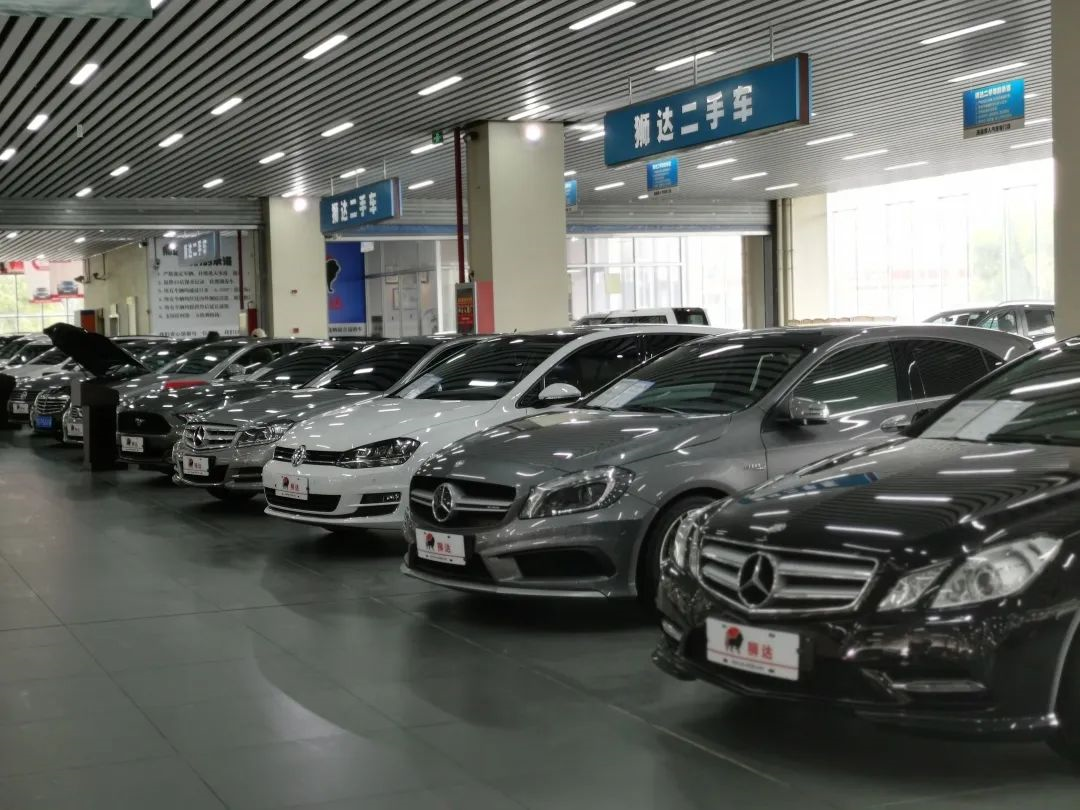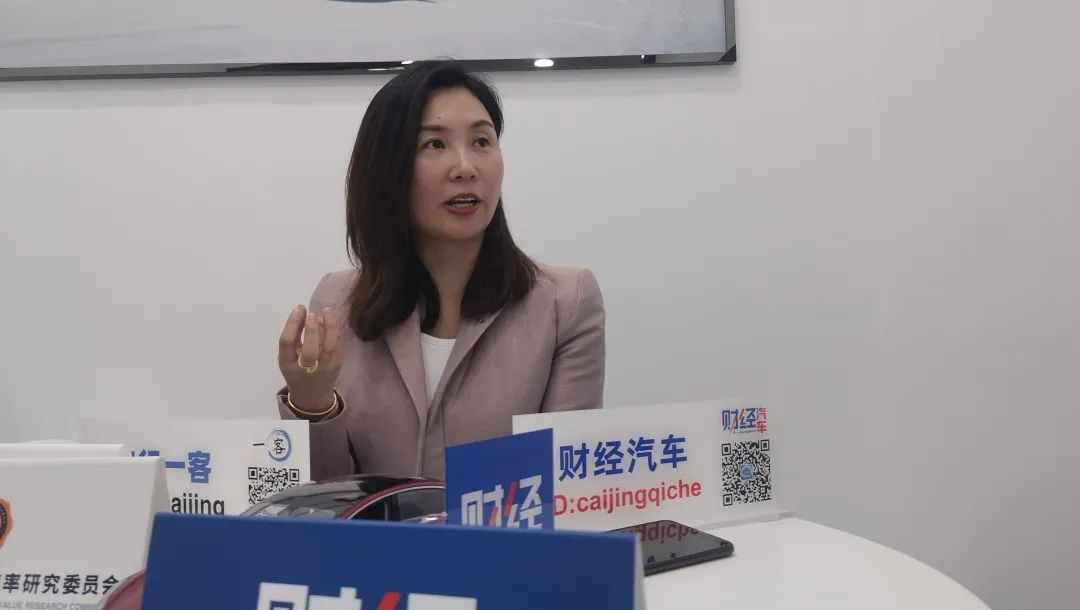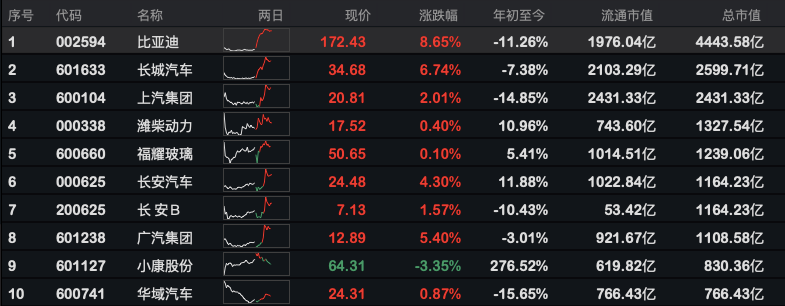The article is authorized for reprint from 出行一客 (WeChat Official Account ID: carcaijing), created by the transportation industry group of “Finance” Magazine, written by Mao Mao Qu, Jingyi Wang, and Wanyuan Liu, edited by Zhiliang Shi.
Is a car a tool or a platform? Are car manufacturers automotive or technology companies? From product to enterprise, a vigorous value reassessment is underway.

What is the most valuable part of a car?
During the era of gasoline-powered cars, the value of a car was determined by the “big three” components: the engine, chassis, and transmission, which were the most expensive parts. In addition, the brand, interior, and after-sales service also had a certain premium effect.
When intelligence and electrification became recognized development directions, the value of cars was no longer limited to hardware, and the significance of software became prominent.
First of all, as internal combustion engines transform into electrically powered ones, the value of a new car is obviously no longer determined by the “big three” components, and the main costs have shifted to the battery, which may even account for one-third of the vehicle’s hardware costs.
More importantly, cars are benchmarking smart phones and becoming platforms instead of tools. Car sales are no longer a one-off transaction, and the greater value is outside the car. Whole-vehicle OTA (air downloads), autonomous driving, and in-car entertainment are all potential revenue sources. New cars are no longer depreciated once they are purchased and the value of their software iteration capabilities is unlimited during subsequent use.
Li Yunfei, brand and public relations general manager of BYD, told CarCaijing (ID: carcaijing) that the value of smart electric cars is divided into two aspects. One is the quiet, smooth, emission-free driving experience brought by electrification, and the other is the much better product experience and stronger interaction with users brought by intelligence. “Many consumers feel that they can’t go back to gasoline-powered cars after driving electric cars.”
When the changes of car products are transmitted to car companies, the market value of listed companies is also changing.
As Gong Min, the head of China’s automotive industry at UBS, said to CarCaijing (ID: carcaijing), during the past year, smart electric car companies represented by Tesla produced less than 1% of global car sales but created the total market value of all car companies.
Zhang Ying, founding partner of GGV Capital, put forward that the valuation of smart electric car companies originates from “car company revenue + technology stock profit margin.” Car companies often have tens of billions of yuan in revenue but low profit margins, while technology companies have high profit margins but smaller revenue scale than car companies. Nowadays, the market generally recognizes the expectation of the transformation of the automobile into electrification and intelligence, which causes the market value of smart electric car companies to exceed that of traditional car companies.
The traditional car manufacturers have a stable and strong dominance in the gasoline car market and are also vigorously competing for dominance in the new energy market. After the skyrocketing of new energy car stocks in 2020, their prices have plummeted significantly in 2021. As of the close of May 19th, the stocks of the top three U.S. stocks – NIO (NYSE:NIO), XPeng (NYSE:XPEV), and Li Auto (NASDAQ:LI) – have fallen by nearly 30% since December 31st, 2020. The stock prices of veteran car companies such as Volkswagen and Ford have significantly increased after the new year, and BMW’s market value, which was once suppressed by NIO, has already surpassed it.
The new track has been built, and the market will provide an answer to who is more substantial. “There is actually little time left for car companies to transform. Basically, in another 3-5 years, a relatively stable pattern of intelligent new energy vehicles will be formed,” said Zheng Yunru, global senior partner of Roland Berger and head of the Greater China automotive industry center.
Hardware value fluctuations are significant, software profit margins are broad
The connotation of electrification is clear, with the greatest change in the powertrain, from internal combustion to electric drive, with the “three major components” exiting, and the main cost being reflected in the battery.
However, due to the rapid iteration, the hardware value of the battery fluctuates greatly. With the release of new models, the value of old models is damaged, and the property of fixed assets of cars is somewhat reduced. “Last year, a car with a range of 500 km was pretty good, and this year the average range has reached 700 km. The technology of batteries is progressing rapidly, and a car can depreciate by more than 15% in a year, while the three major components of gasoline cars are already mature enough and can only drop by a maximum of 5-8% per year,” said Jiang Chi, data expert on the retention rate of Blue Book value business, to CarCaijing (ID:carcaijing).
If the value of intelligent electric vehicles is all placed on the battery, the value is obviously not high. Therefore, intelligence represented by software becomes the key.
Zheng Yunru believes that the value of intelligence is reflected in the intelligent cockpit of human-machine interaction; in the view of Yang Dongsheng, vice president of BYD Group, a truly intelligent car is one that can take over 100% of the functions of a smartphone’s in-car system; and according to Yu Kai, CEO of Horizon Robotics, “once you enter the car, you can throw away your phone, which is a standard for the success of intelligentization.”
“The car itself is no longer just a car, it is more like a supercomputer, or an extension of the concept of electronic products,” said Li Jianteng, managing partner of Aurecon, “the judgment of the value of an intelligent car is more reflected in the possibility of software upgrades and the reliability of the system, and the impact of traditional mechanical parts is becoming smaller.”Consensus has not yet been formed. In the eyes of traditional automakers, the value of cars still lies in quality. Yuan Xiaohua, Vice President of GAC Honda Automobile Co., Ltd. told Carcaijing(ID: carcaijing) that the “software-defined car” advocated now adds some concepts under the premise of the original “quality-defined car” instead of two different routes. Just like online and offline car sales must be integrated, online communication or interaction can be done, but in the end, it still needs to be realized offline.
Who will dominate is unknown, but the fact is that the value of software increases, not only reflected in the design concept of new cars but also in subsequent sources of profit.

Tao Lin, vice president of Tesla, told Carcaijing (ID: carcaijing) that many car companies are releasing their own intelligent operating systems. These software and in-car applications are just the beginning. With the car being able to drive automatically, more and more things can be used in the car. This is not only a problem of source of income, but it also reshapes different interest patterns in the automotive industry.
Taking Tesla’s charging for automatic driving as an example, CICC’s research found that the software profit at a 60% penetration rate can exceed that of traditional luxury carmaker Daimler. In the past five years, Tesla has invested RMB 50 billion in R&D. Assuming that it takes 10 years for the entire cycle of automatic driving. The one-time payment for advanced automatic driving is RMB 64,000. At 40% software penetration rate, a single new car can contribute nearly RMB 10,000 in a single car profit, surpassing Most of the profit from the entire vehicle hardware profit; at a 60% penetration rate, the single-car software profit contribution is about RMB 28,000, which is comparable to the peak period of Daimler’s single-car profitability.
There is a lot of imaginary space for profit. McKinsey’s research data shows that China is likely to become the world’s largest automatic driving market, and the sales and revenue of automatic driving-related new cars and travel services will exceed 500 billion U.S. dollars by 2030.
CICC’s research report believes that the value chain of the automotive industry has shifted from inside the car to outside the car, and the profit model has also changed to “channel fees”. At the same time as achieving advanced automatic driving, the attention of drivers and passengers has shifted from inside to outside the car, which has also brought about the transfer of the value chain. Enterprises that provide in-car entertainment, consumption, and content will be more valuable, and the charging model of automakers will also shift from the current new car sales profitability to Hardware-based software charging with differentiation, such as automatic driving, ultimately developing into collecting channel fees during the service process.
Lack of uniform standards, intelligent electric vehicles are difficult to retain value.For fuel-powered cars, the main reference standards for residual value pricing include vehicle model year, mileage, condition, supply and demand in the market, historical transaction prices, prices for new cars of the same model, and emission standards and policies, according to Wang Xiaoyu, the co-founder and vice president of Guazi Used Car, in an interview with Carcaijing (ID:carcaijing).
While the same hardware standards may be applicable to intelligent electric cars, there is as yet no evaluation capability for software, let alone the value of subsequent software iterations.
“In the past, functionality was the standard for evaluating cars, and completing people’s travel tasks was the main goal, with people as the executors of the task, namely driving the car. If it becomes intelligent, people will be liberated, and perhaps in the future, cars will not need people to drive them anymore. The car will change from a tool to a platform, and how many tasks it can perform and how it can complete them will become the key to evaluating the value of future cars,” said Jiang Chi, in an interview with Carcaijing.
According to a research report by CICC, the profitability of the automobile industry is continuing to decline, and future valuations will be anchored on software profits and services revenue under a new valuation system.
However, as intelligence is just beginning to take off, will the current software or subscription services be strong enough? Can they support sustained revenue from software? How can car manufacturers coordinate revenue deferral brought about by software? There is no unified agreement on these issues yet.
“When the outbreak point of software fees has not yet come, we need to consider more about practicability, as well as the need for various adjustments or introduction of different partners to participate together,” said Zhang Ran, a partner and co-CFO of WM Motor, in an interview with Carcaijing. “The automotive market is not always something that can be implemented immediately.”
Intelligent electric vehicles are difficult to evaluate due to a lack of standard valuation criteria, making their residual value and liquidity a challenge for the industry.
Due to the low stock of new energy vehicles on the market and limited supply of vehicles, evaluation data for the second-hand car market is limited, with battery usage and supply and demand in the market being the only available reference points. Currently, pure electric new energy vehicles account for about 1% of the stock, and about 4% in the stock of the four cities of Beijing, Shanghai, Guangzhou, and Shenzhen, according to Wang Xiaoyu in an interview with Carcaijing.
Zhang Yanwei, COO of Tiantianpache, also admitted to Carcaijing that “we can only explore during the inspection process. Currently, what we can do is to detect data that can be seen on the dashboard, such as mileage, and check maintenance records, etc.”
Some auto companies are trying to make changes. As a representative of new car-building forces, NIO is trying to build a closed-loop after-sales system based on vehicle-electronics separation, battery rental services, and battery swapping mode, and will invest RMB 3 billion in building and promoting official used car business over the next five years.The China Automobile Circulation Association has worked with multiple parties to develop appraisal and evaluation standards for used new energy passenger vehicles, aiming to improve the efficiency of used new energy car circulation.
“This is an intermittent pain for the industry,” Jiang Chi told Caixin ID:carcaijing. The three characteristics of unstable subsidies for new energy vehicles, unstable automotive technology, and low market concentration mean that this stage is still in a state of groping, with more chaos than rules, as he put it.
Industry insiders point out that with the continuous upgrading of battery and other technologies, the growth of the vehicle stock and the improvement of OTA upgrade services, the problem of low residual values for new energy vehicles is expected to be reversed, and ultimately, new energy vehicles and fuel vehicles will tend to converge, but this still requires a long time.
Why does Great Wall Motors, whose market value has skyrocketed, still consider itself undervalued?
“Great Wall Motors’ current market value is seriously undervalued, and the capital market has not yet discovered our value!” Wei Jianjun, Chairman of Great Wall Motors Co., Ltd., publicly stated in November 2020.
At that time, Great Wall Motors’ stock price soared to nearly RMB 300 billion, reaching the highest level of its history, but Wei still felt undervalued. In the six months from early July 2020 to the end of January 2021, the stock price of Great Wall Motors rose from RMB 7.81 to a peak of RMB 51.22, an increase of 7 times. To put it in perspective: Great Wall Motors has been listed for ten years, with its stock price hovering in the single digits and peaking at only RMB 13.39 in 2015. The recent high is already three times higher than the previous peak.
This is a quiet change in the value system of automobile companies – if Great Wall Motors is classified as a traditional automaker, it has indeed grown very fast; but if defined as a new force in car manufacturing or a technology company, then it must be undervalued.
After all, in the past six months, Tesla’s market value increased from less than $80 billion to over $600 billion, surpassing the sum of the world’s nine largest automakers; and NIO, which was established only seven years ago, has a total market value exceeding $70 billion, leaving behind higher sales volume of BMW, Daimler, SAIC, and other companies, and even rising to the fourth largest automaker globally.
“When evaluating the market value of a smart electric vehicle company, it is worth referring to Apple. Trillion-dollar market value cannot be supported by a single phone product alone, and its market value is largely due to its ‘interconnectivity’. As long as consumers can achieve shopping, reading, entertainment, socializing, and other aspects through Apple products, they can charge fees,” an investor in new energy vehicles told Caixin ID:carcaijing. For example, when WeChat public account added the function of reward, Apple also charged it a commission of 30%, which can be described as “plucking feathers from geese”. Electric vehicles are expected to become a new carrier of interconnectivity, with a larger volume than smartphones.# Automotive Industry Analysis: Capital Influx into New Energy Industry Brings Potential Bubble
According to Ren Wanfu, a senior automotive industry analyst, with the current COVID-19 situation causing an industry-wide decline, capital is flowing heavily into the relatively reliable new energy industry, resulting in a potentially overblown market to some extent.

Globally, the value of automotive companies is being overturned by the wave of new technologies. In China’s market, a prominent characteristic is that the value of independent brands empowered by intelligent electrification has been reevaluated, and they are now showing the confidence to challenge their JV counterparts who have dominated the market for years.
Guotai Junan Securities’ research report suggests the future outlook of the revaluation of independent brands because of three key points. Firstly, performance improvements and fashionable appearances of domestic cars in recent years have led to more market recognition. Compared to well-known JV brands, independent brands’ sales have reached their highest share so far. Secondly, the concentration in China’s A-share automotive market has increased, with the top five whole-car manufacturers having reached a 75.19% industry concentration rate. This shows increasing competition among leading automakers. Lastly, traditional automakers are benchmarking with new automakers, invest more in new energy projects, and are collaborating deeply with internet-based corporations, which in turn enhances automakers’ incremental business opportunities.
Under the wave of new automotive technologies, independent brands are rapidly expanding their technological capabilities and industry chains, taking an active stance toward change. For example, despite already having the second-largest market value among Chinese automotive companies, Great Wall Motors still feels underestimated. Its vision has broken from the traditional automotive industry dominated by JV companies for years, pivoting instead towards challenging tech companies.
What are the rational value elements?
The reevaluation of automotive values has brought reshuffling and transformation to the industry. Currently, traditional automakers are transforming into tech companies, entering the “new model + new technology + new management” period with uncertain outcomes.
For instance, BYD Group, which ranks at the top of A-share automakers in terms of market value, has subsidiary tech companies that span the entire new energy vehicle industry chain, with the semiconductor sector about to split and independently go public. Second-ranking Great Wall Motors launched the “Coffee Intelligence” system, specializing in intelligent cabins, ADAS, and intelligent electronic architectures. It aims to achieve comprehensive redundant L3-level autonomous driving in 2021. Third-ranking SAIC Group has also announced investments of 300 billion yuan into innovative fields like intelligent electrification and aims to transform entirely into high-tech companies by 2025.
As the value of the entire automotive industry chain may be reevaluated due to the revolution, where a vehicle can regain power through battery swapping, and software updates can be charged, every submarket has the opportunity to create new value.
Traditional automakers have detected opportunities and have begun to separate their businesses into various parts. By accentuating the value of each sector while at the same time increasing the overall market value and competitiveness, they have achieved success.Using Great Wall Motors as an example, the six major component companies under the Great Wall Holding Group include Honeycomb Easy Creation, Honeycomb Energy, Weshine Energy, Shangran Power, Nobo Auto, and Jinggong Chassis. In 2018, Great Wall Motors’ component business began independent operation and started independent external supply, while focusing more on the whole vehicle business.
Regarding the reasons for timely divestment of various component businesses, Wei Jianjun believes that one is to fully integrate into market competition and develop external customers, and the second is for the business department to become a company and achieve capital diversification.
BYD’s split is also based on the same logic. As early as 2017, BYD, which had a long-established industrial closed loop, had already embarked on the path of opening up to the outside world, established “Fudi series” companies, and split semiconductor businesses, etc. BYD is transforming more than 20 years of technical accumulation into products that the new era of automobiles urgently needs.
The value reconstruction of various links in the automobile industry chain means the transfer of discourse power. “In the past, the OEMs can be said to dominate the automobile industry chain. Now, the discourse power and profit structure of software suppliers such as Huawei, transportation platforms such as Didi, and battery manufacturers such as CATL are increasing.” Li Jianteng said.
Technology companies such as Baidu, Xiaomi, and 360 have also extended their tentacles into the automobile industry. The space for imagination that software brings to cars has also given cross-border players the opportunity to build cars, while cars are empowering new values for these cross-border players.
Zhaojin International Securities Research Report believes that Baidu’s transformation in automotive search is pushing for value reassessment, joining forces with Geely to set up Jidu Auto, and expanding smart transportation projects to more cities such as Beijing and Shanghai. The commercialization of Apollo automatic driving technology is being gradually promoted, enhancing revenue predictability.
However, there is an irrational component in the reassessment of the value of automobile companies, which even subverts the previous investment logic. Currently, the market value of some technology companies has skyrocketed even without launching a new car, while the market value of new car makers is several times that of traditional automakers with sales of less than 1%. Whenever there are details of cooperation between traditional OEMs such as BAIC and Changan and Huawei, their stock prices also rise continuously.
Compared with traditional OEMs such as GM and Daimler, new car makers such as NIO and Tesla are better at telling new concepts and stories. The former has too much restriction due to its large plate size, while the latter have become the darling of the investment industry.
Zheng Yun believes that the large plate size of traditional automakers is not easy to drive valuation. He explained: “For the transformation of traditional automakers, they need to take care of their own business and also explore new businesses. The market has higher requirements for traditional automakers. On the contrary, investors are more optimistic about small-sized companies with new-generation vehicle models that can drive up their valuations.”
This is contrary to the essence of value investing. The valuation of a car company should reflect the company’s scale and sales, product matrix and competitive strength, operational efficiency and cross-border capabilities, local competition and global layout, and bottom-line values including accident rate and second-hand car circulation rate, and we also need to be vigilant about the existence of bubbles.The chairman of Geely Holding Group, Li Shufu, believes that the basic law of the automotive industry will not change, which is the scale. In the end, the number of global automotive industry enterprises that survive will not be too many, and only scale enterprises can survive.
“Watch this hundred-year drama of automotive revolution carefully, the best is yet to come. What decides the success or failure of an enterprise is not superficial flamboyance and buzz, but the accumulation of thick and thin and core capabilities.” Li Shufu said.

This article is a translation by ChatGPT of a Chinese report from 42HOW. If you have any questions about it, please email bd@42how.com.